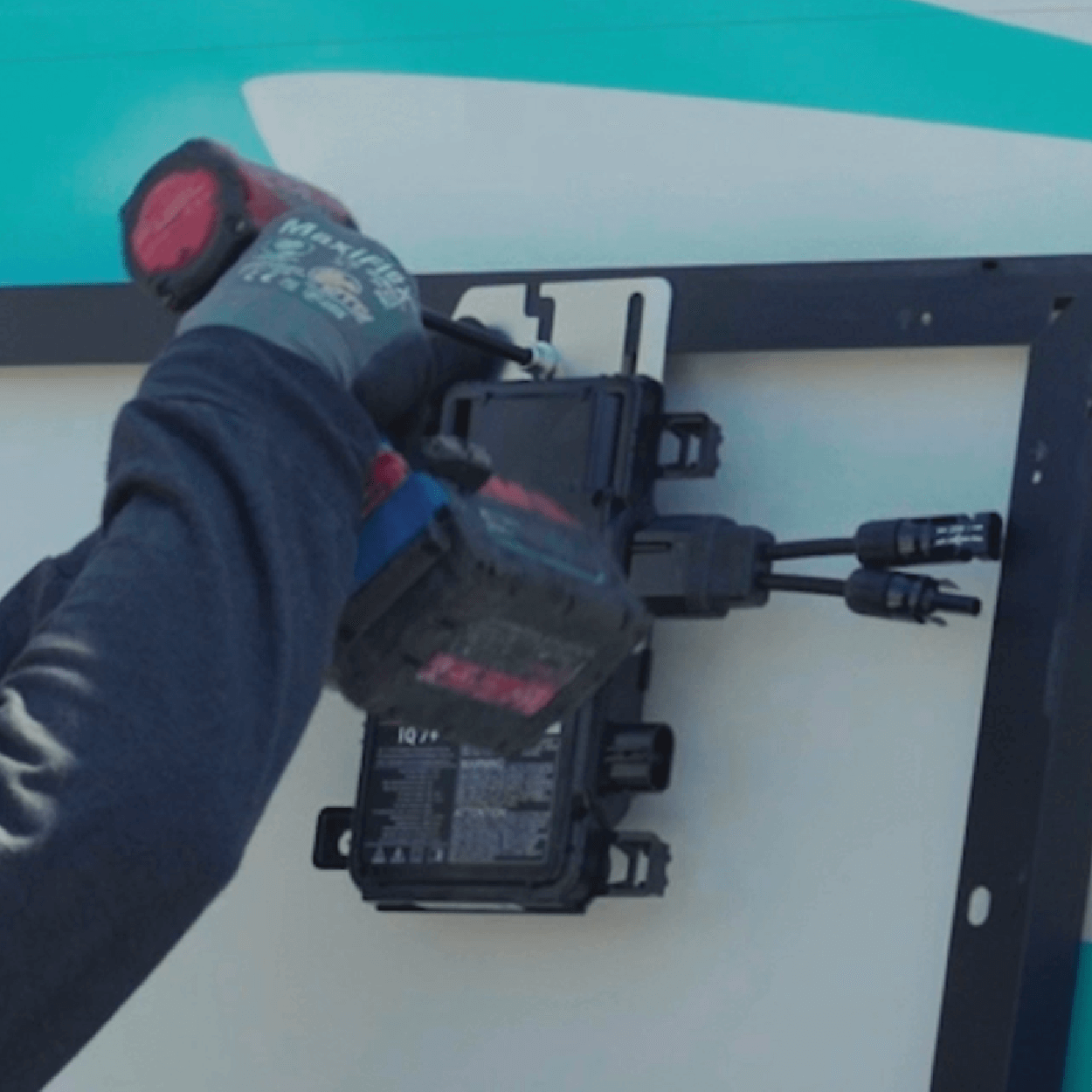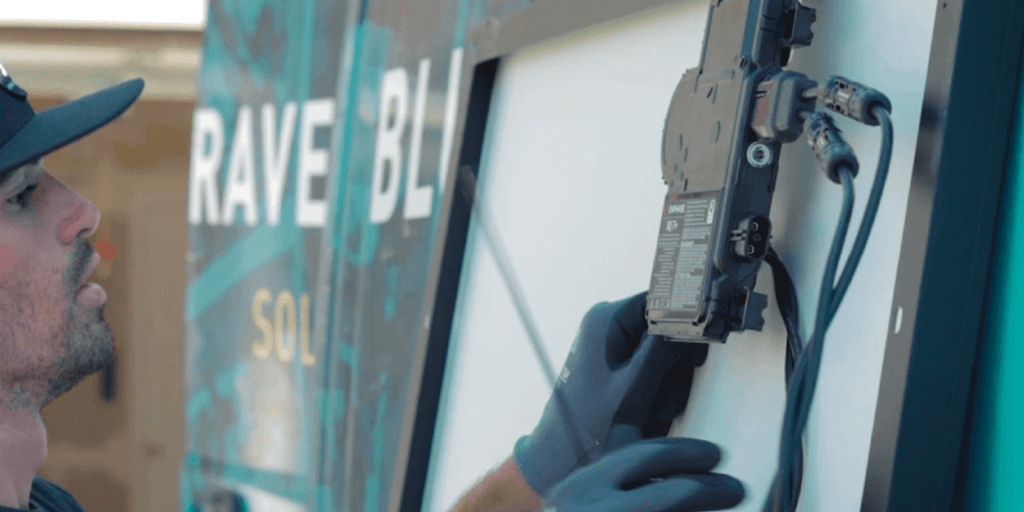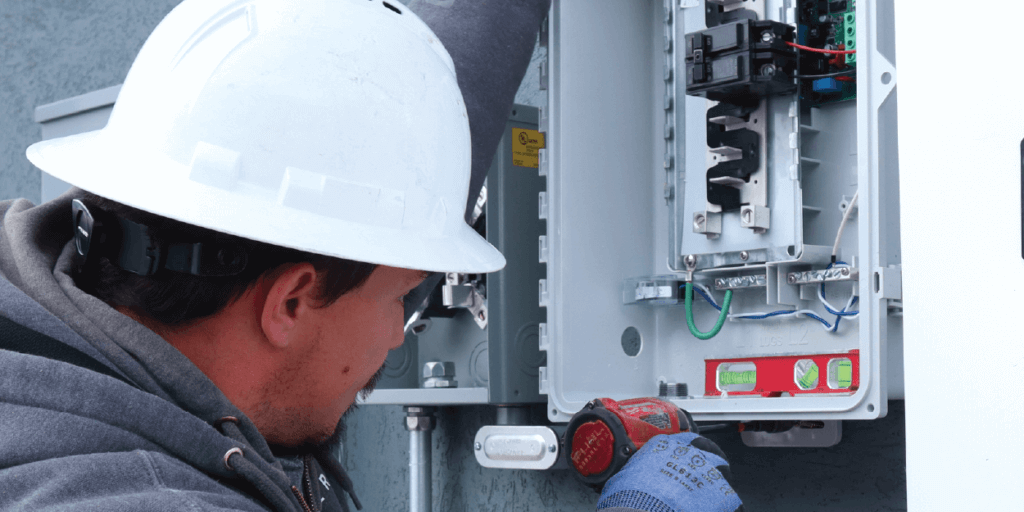
Microinverters are a type of power inverter used by rooftop solar systems to convert the sun’s light into electricity. To understand the basics of solar panel inverters and how they work, check out our article What are Solar Inverters. More specific details are also available on string inverters.
This article will explore microinverters, how they work, how they compare to other solar inverters, and their advantages and disadvantages—all to help you better understand the best solar inverter available to you when making the switch to solar.

What is a Solar Inverter?
A solar inverter is a piece of hardware that converts direct current (DC) electricity captured by your solar panels to the alternating current (AC) electricity you use in your home.
A standard inverter is installed between your solar panels (and the other hardware components of your solar system) and your home’s electric meter—typically one for the whole system. In contrast, microinverters are installed one per individual solar panel, which means your system will include as many microinverters, as you have panels.
How Microinverters Work
Microinverters optimize energy production based on the unique environmental conditions of each panel in your system to ensure each panel contributes its maximum power output. This maximum power point tracking (MPPT) is a critical feature of microinverters. MPPT adjusts the panel’s voltage and current to extract the most energy possible. It continuously tracks the maximum power point for each panel based on factors such as temperature, shading, and sunlight intensity.
Microinverters also monitor the performance of each panel to identify problems and limit impact on the power output of the entire system.
Microinverters vs. String Inverters: What’s the Difference?
String inverters and microinverters are similar because their purpose is the same. However, the primary difference is where they convert solar energy.
A string or central inverter is about the size of a small suitcase or large briefcase—much larger than a microinverter. Usually, the string inverter is installed near your main service panel or electric meter, and it combines one or more strings (an array of modules connected in a series) and converts the total power output from DC to AC.
A string inverter can be simpler than a microinverter system and is often less expensive as well, but it has some drawbacks. For example, if a single solar panel in a string is shaded or damaged, it will reduce the performance of the string. A string inverter can also only monitor the production of a string of panels, not each individual panel.
Alternatively, a microinverter is a small device—about the size of a paperback novel—attached to the back of each solar panel. A microinverter is typically more efficient and durable than a string inverter, which can come with added cost. The benefits and increased reliability of microinverters make them the standard choice of Blue Raven Solar’s expert teams.

Advantages and Disadvantages of Microinverters
Microinverters generally have a lifespan similar to solar panels of about 25 years. The best and highest-quality microinverters—such as those offered by Enphase—also include warranties covering the energy production of your system to ensure it will function properly and efficiently.
In addition to the longer expected lifespan, microinverters offer a number of benefits including:
- Each solar panel can operate independently, which improves the overall performance and efficiency of the solar system.
- Built-in rapid shutdown capability, which enhances the safety of the solar panel system in case of emergencies or maintenance.
- Panel-level monitoring, optimization, and diagnostics, which helps identify and resolve issues quicker.
- Flexibility for panel layout and expansion, which allows for more design configurations and easier installation.
- Extended warranty covering defects in workmanship and materials for the lifespan of the microinverter.
Some potential drawbacks of using microinverters include:
- Could be more expensive than installing a string inverter, which can contribute to a higher upfront cost of the system.
- Maintenance requires access to each panel
- May be exposed to harsher weather conditions on the roof than a string inverter mounted to a wall
Blue Raven Solar’s Mission, Recommendation, and Commitment to High-Quality Equipment
Blue Raven Solar’s mission is to provide homeowners with clean, affordable, and reliable solar energy. To accomplish this goal, our well-trained and specialized solar energy consultants recommend homeowners install microinverters over other inverter technology because they optimize energy production for a more dependable home solar system. Blue Raven Solar currently installs Enphase microinverters, a partnership we’ve chosen based on the reliability of their microinverters’ performance and warranties.
An added benefit of this specific brand of microinverters is the Enphase app, which allows you to monitor your system’s status and energy output for each microinverter and the solar panel system overall, using your smartphone or device. The app allows you to generate reports based on energy production by day, week, month, or year and displays all of this information in a simple dashboard.
If you’re ready to go solar and install microinverters for efficient, accurate, and reliable power generation, contact Blue Raven Solar today. Our solar experts will assess your energy needs and provide a customized solar solution.
Get a free savings report today!
Frequently Asked Questions:
IS A SOLAR INVERTER REQUIRED?
Yes, a solar inverter is essential to converting the direct current (DC) electricity generated by solar panels into usable alternating current (AC) electricity to use throughout your home. Without an inverter, the energy captured by solar panels cannot be used to power your devices or appliances.
CAN MICROINVERTERS BE USED WITH ANY TYPE OF SOLAR PANEL?
Microinverters can be used with most solar panel types; however, it’s crucial to check compatibility with the specific microinverter model and the brand of solar panels you’re installing. Compatibility of various solar panel types with Enphase microinverters can be checked here.
WHAT IS THE LIFESPAN OF A SOLAR INVERTER?
The lifespan of a solar inverter depends on several factors such as quality (high-quality inverters typically last longer), environmental conditions (exposure to extreme temperatures, humidity, and other environmental factors affect longevity), and maintenance (regular maintenance can extend the inverter’s life).
HOW MANY INVERTERS ARE TYPICALLY INCLUDED IN A SOLAR SYSTEM?
The number of inverters in a solar system varies based on system size (larger systems may require multiple inverters), inverter type (string inverters are common for larger arrays, while microinverters are used at the panel level), and design (some systems use a single central inverter, while others distribute microinverters across panels). For a residential rooftop system using microinverters, like those typically installed by Blue Raven Solar, you can expect to have as many microinverters as you have solar panels.
ARE THERE ANY MAINTENANCE REQUIREMENTS FOR MICROINVERTERS?
Microinverters are generally relatively low maintenance. It’s important to do regular inspections to ensure the proper functioning of each inverter, clean your solar panels and microinverters to maximize efficiency, and regularly monitor system performance to detect any issues.



Sorry, the comment form is closed at this time.